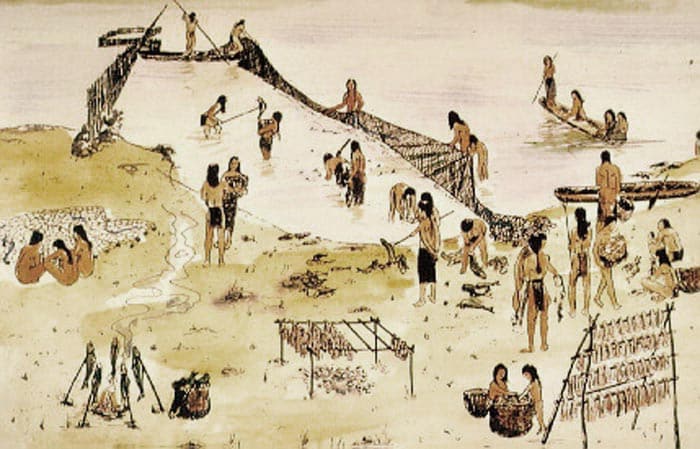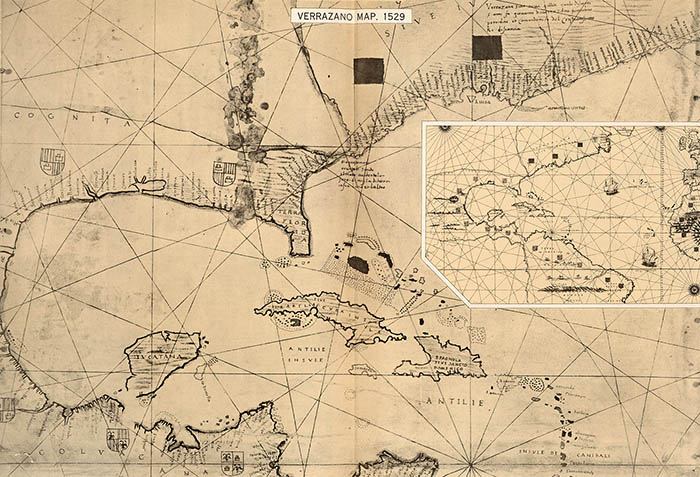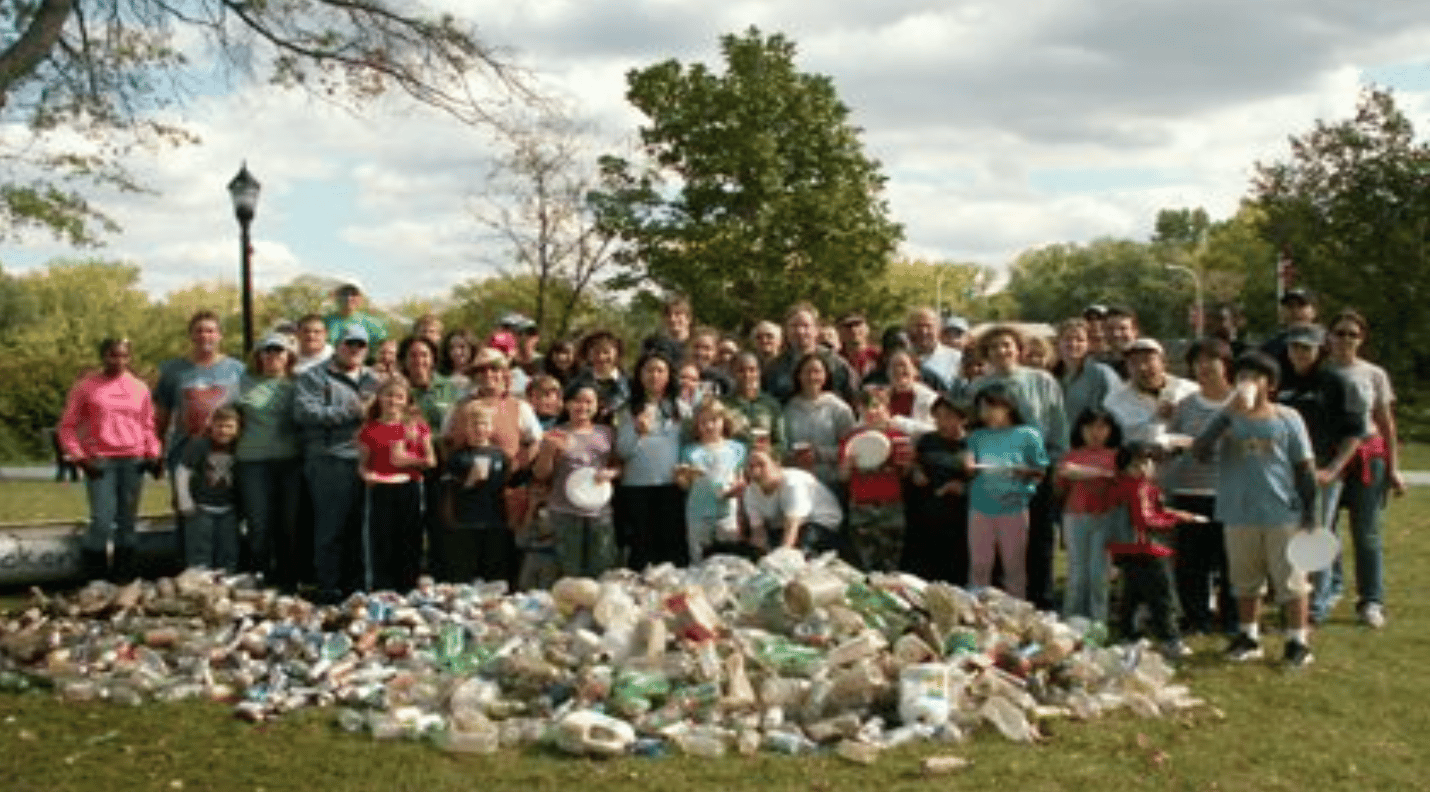uncover
History of a Watershed
The history of any watershed starts with the shape of the land.
North America has been shaped by geologic and geomorphic (land shaping) systems like tectonic plate movement, weathering, erosion, and deposition. About a billion years ago, the circulation in the Earth’s mantle pushed and pulled the Earth’s crust causing uplift (mountain building) and rifting (pulling apart). Lots of sediments moved and were deposited as the mountains weathered and eroded. In the last 2 million years, a series of ice ages caused miles high ice sheets to form in Northern Canada and advance south. The most recent glacial ice sheet retreated from the northeast USA only about 10,000 years ago [Laruentide Ice Sheet Map]. The repeated advance and retreat of glaciers over the Northeastern US formed what we see today in the hills and valleys where water flows in the Hackensack watershed.



The Hackensack River Watershed provides a rich environment for humans.
There is evidence that people lived on the lands of the eastern USA for thousands of years prior to the arrival of Europeans. The modern indigenous people of New Jersey, eastern Pennsylvania, Southeastern NY, and northern Delaware call themselves Lenape or Lenni-Lenape meaning “common” or “original” people. This region provided everything they needed to thrive including rich lands to cultivate; forests to hunt in; materials to build shelter; and lakes, streams and rivers, for transportation and food. The Lenni-Lenape people moved throughout the region, migrating seasonally in order to harvest and manage the resources of the land and water. They planted and harvested, hunted game, fished the anadromous shad and giant sturgeon that swam up the Hackensack River, and collected shellfish on the shorelines. The name of the river – Hackensack – comes from the Lenape word Achsinnigeu-haki, meaning the land of stony ground.
European arrival and settlement in the area.
In 1524, Italian explorer Giovanni de Verrazzano remarked in his journal that the shores of the Land of the Lenape were “densely populated.” Verrazzano is considered the first European to have explored the eastern coast of North America. Following Verrazzano, other groups of Europeans who arrived and established settlements in the traditional lands of the Lenape people.

Among the settlers were Dutch, Swedish, Finnish, and English colonists, all attracted to the region for the same reasons the Lenape thrived - access to ample resources in the rich river lands, forests, and sea shore.
The Lenape were a deeply religious people and their belief in a Creator and eleven lesser gods reached all aspects of their lives. They believed that all things had souls. This reflected a deep reverence for their natural environment and a concept that they were only a small part of Nature's grand scheme. This belief made it difficult for them to understand the concept of land ownership and purchase.” [Atlantic Co., NJ]
There are many stories of European settlers “buying” land from the Lenape people with trinkets and tricks. European settlement also brought diseases that decimated the Lenape people. Some estimates suggest that 9 out of 10 Lenape people were killed by foreign diseases from which they had no immunity between 1620 and 1640. The westward and northward migration of the main group of Lenape out of New Jersey occurred between 1664 and 1740. However some people remained in New Jersey and found ways to stay on their land by living among English colonists. [source]

Industrialization and the need to dispose of waste.
As the native populations were pushed further west and north, the Hackensack River Watershed became more populated with European settlements. Over time, the river became one of the busiest commercial centers in New Jersey. The river continued to be used for water, food, and transportation, as it had always been, but as the population grew the river became valuable for something else. . . it swept waste downstream. The Hackensack River became a de facto waste disposal system for growing communities that needed to drain their sewers – it conveniently carried sewage and trash away from where people lived.
As towns grew into cities and small businesses gave way to large factories and industry, getting rid of waste was no longer a household problem, but a metropolitan concern. Construction and industrial waste, sometimes toxic, needed to be removed from certain parts of town. Much of the waste was deposited into the Hackensack Meadowlands. The Meadowlands - a huge wetlands ecosystem - was considered a wasteland itself because it was not developable. This made it a "perfect" place to dump a lot of toxic waste. The devastating pollution that has severely damaged the ecosystems of the lower Hackensack Watershed, came from a capitalist industrial system that was not regulated with any oversight and that had no concern for the plant and animal life that needed these ecosystems for survival [Skyway Park Conservancy].
Laws to protect & clean up polluted waters.
In the late 1960s, a grassroots environmental movement rose up across the country, protesting the unchecked pollution and degradation of the nation's natural resources. National groups like Sierra Club, Environmental Defense Fund, and The Nature Conservancy drove the movement toward national policy change. In 1970, the federal government established the Environmental Protection Agency (EPA) and a flow of new legislation, designed to protect the environment and people, was passed:

- Occupational Safety and Health Act (OSHA), 1970
- Clean Water Act, 1972
- Clean Air Act, 1970
- Endangered Species Act, 1973
- Comprehensive Environmental Response, Compensation, and Liability Act (CERCLA or Superfund), 1980
These laws have been used to fight pollution, prevent or clean-up dumping of hazardous waste, and protect against overdevelopment at the local level. In Hudson County (and neighboring Bergen County), a campaign to cleanup the Hackensack River was led by Hackensack Riverkeeper and others. Waste from towns and industry no longer flows unchecked into the river, and many big corporations have been forced to clean up the pollution for which they are responsible [source].